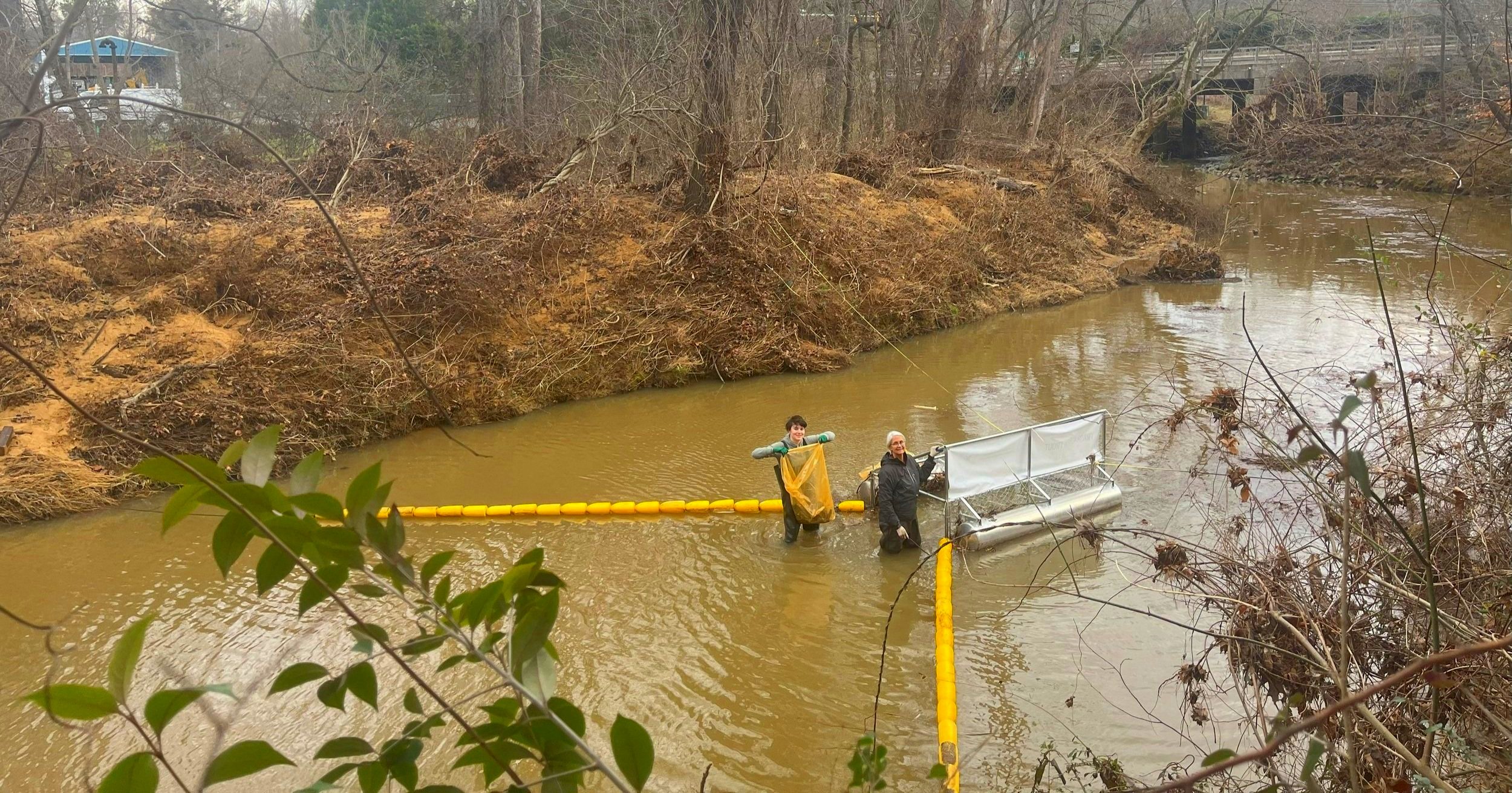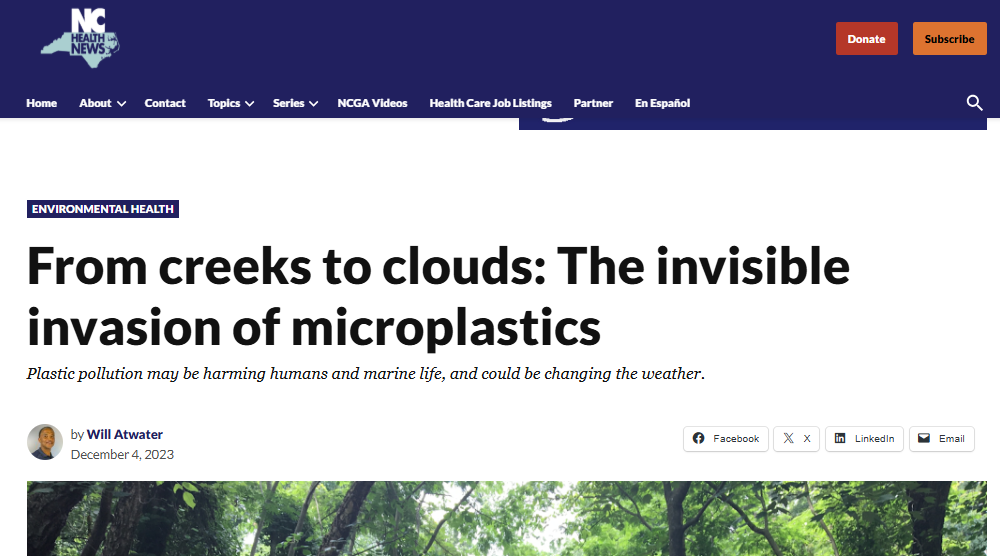
Trash Trap Program
Our Trash Traps
Trash Traps are purpose-built stormwater litter traps. These traps sit in urban creeks and streams keeping man-made trash from entering main waterways. These devices are built to withstand the rigors of flashy rain events, yet passive enough not to harm the local fauna.
Roadside littering accounts for the majority of the trash in our nations waterways. Each time it rains, this trash is funneled through our storm drain systems and directly into our creeks and rivers. No filters or other mechanisms are in place to keep the trash from entering our waterways.
A Little History
NC Riverkeepers across the state received a grant with the help of Waterkeepers Carolina, to collaborate with Asheville GreenWorks and their “Trash Trout” design to help mitigate stormwater pollution in our waterways. The Haw River Assembly installed its first “Trash Trout” in Third Fork Creek, Durham.
Now we have built more traps placed in several locations along several creeks in our watershed. As of November 2024, we have eight operational "Trash Traps" in Durham Third Fork Creek, Durham Northeast Creek, Greensboro Barber Park, Greensboro Mile Run Creek, Chapel Hill, Carrboro, Pittsboro, and Burlington.
How To Get Involved
Join a Trash Trap team near you! We have Trash Traps located in Burlington, Greensboro, Pittsboro, Durham, Chapel Hill, and Carrboro. Get on your waders and help us keep plastic, microplastics and trash from flowing into the Haw! Trash Trap clean-outs are regularly held the last Saturday of the month, with a few exceptions based on holidays. Sign for our Trash Trap list-serv to learn about upcoming clean-outs! Once you sign up using the list-serv, you will receive a monthly email with details regarding clean-outs. Please note, we don’t host clean-outs during Winter months and we also adjust the start times based on the season.
What Does Volunteering Involve?
Volunteer roles include helping remove litter from the actual trap, organizing the litter into categories based on our data sheets, and helping count the litter. That data collection goes into a dashboard, and the information is used as we work for towards legislation and policies aimed to reduce litter. Most clean-outs take place between 45 minutes to two hours, depending on the amount of trash and number of volunteers present. We allot two hours per clean-out, and if there is extra time, volunteers can help clean-up trash up and downstream of the Trash Trap. We also have our dedicated “Trash Trap Leaders” who our volunteers that guide the process from start to finish.
What Should I Bring to a Clean-Out?
Closed-toe shoes and long pants
Waders, if you have them. We will have a few pairs at each location, but not enough for all volunteers (getting in the water is optional).
Drinking water/any needed personal items
Are there any requirements?
Participants must be 12 years or older
Ages 12–15 must be accompanied by an adult or chaperone
If children under 12 are present, please ensure another adult is available to supervise
All participants will sign a virtual waiver form before the clean-out and participants under the age of 18 must have an adult sign-off on the virtual form to be eligible to participate
All participants are asked to listen to safety tips and requirements stated by the Trash Trap Leader. Sharp objects or needles may occasionally be found, so it is important to be cautious and listen to protocols before starting.
Trash Traps in the News
How do Trash Traps work?
Once the trash has entered the water, it will begin the process of photodegradation. Whereby the petroleum based products such as plastics begin to break into smaller pieces known as microplastics. These tiny pieces of trash are in some instances consumed by wildlife with the majority of this debris will go on a journey that will take it through several states and rivers before finally ending up in our oceans.
Help us
Monitor our waterways by becoming a Trash Trap volunteer member or sponsoring our Trash Trap Program. Complete the form below to receive a monthly email about volunteering.









